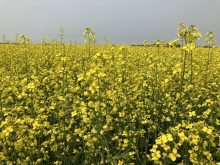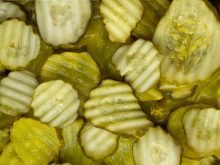CANADA’S livestock industry is losing its competitive edge, a problem that a one year, one province assistance program can’t fix.
The Alberta government has offered a helping hand to its livestock producers and feeders through the $165 million Farm Recovery Plan, paid through the Canadian Agricultural Income Stabilization program.
The plan, described as a bridge to a longer-term solution, is designed to offset rising fuel, feed and fertilizer costs.
Producers in other provinces likely hope their governments will also address the need and, with a booming western economy, politicians can’t plead poverty.
Read Also

Growth plates are instrumental in shaping a horse’s life
Young horse training plans and workloads must match their skeletal development. Failing to plan around growth plates can create lifelong physical problems.
But the livestock industry faces an ongoing struggle.
Asia’s boom is unlikely to bust and political tensions and declining reserves mean high oil prices will remain high.
That will support a strong loonie and increase farm input costs. It means the energy and resource boom here will continue, keeping labour costs high for meat packers, and continued interest in alternative fuels like ethanol and biodiesel, which supports strong grain prices.
So the livestock industry’s international competitiveness will be challenged even when the contraction phase of the cattle and hog cycles start to raise animal prices.
The industry must confront these systemic disadvantages because it should not expect special long-term income assistance, especially when many sectors are hurt by the strong currency and energy costs.
But government can help by focusing on research and eliminating bureaucratic impediments.
A leading problem is feed grain yield. In the last 10 years American average corn yields have risen 23 percent while Canadian barley yields have been static and wheat yields have risen by about 13 percent.
One of the roadblocks to seed and yield improvement has been the breeding requirement for kernel visual distinguishability (KVD). Agriculture minister Gerry Ritz has promised to end KVD in legislation designed to restructure the Canadian Grain Commission this year. With this obstacle removed, there needs to be a renewed commitment to crop breeding funding from government, industry and seed companies to quickly bring the benefits to farmers.
There is more that government can do.
Labour shortages are a critical issue for Canada’s meat packing industry, causing profitability problems that filter down to the price cattle and hog producers receive. Government can help by enhancing the temporary foreign worker program and improving and streamlining the immigration process.
The government must keep the costs of inspections and certifications competitive with the United States.
The cost and timeline of introducing new veterinary drugs must also be competitive.
Canada should spend more on meat export development to catch up to better funded campaigns maintained by competitors such as Australia.
Such actions will help Canada’s livestock industry face the future, no matter what happens to the dollar and oil prices.
Bruce Dyck, Terry Fries, Barb Glen, D’Arce McMillan and Ken Zacharias collaborate in the writing of Western Producer editorials.














